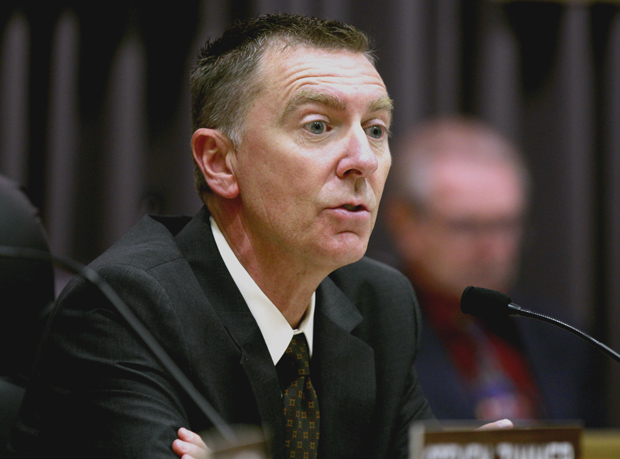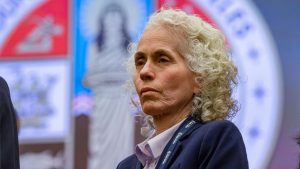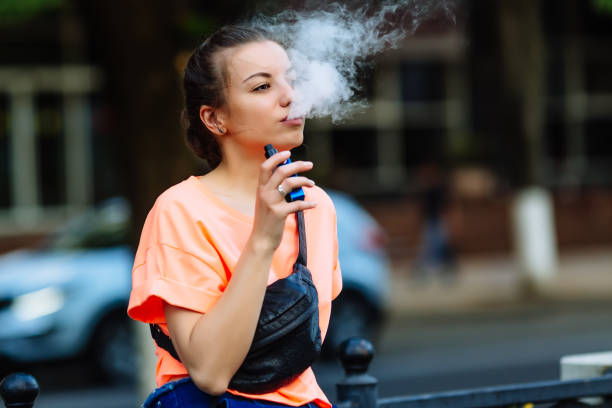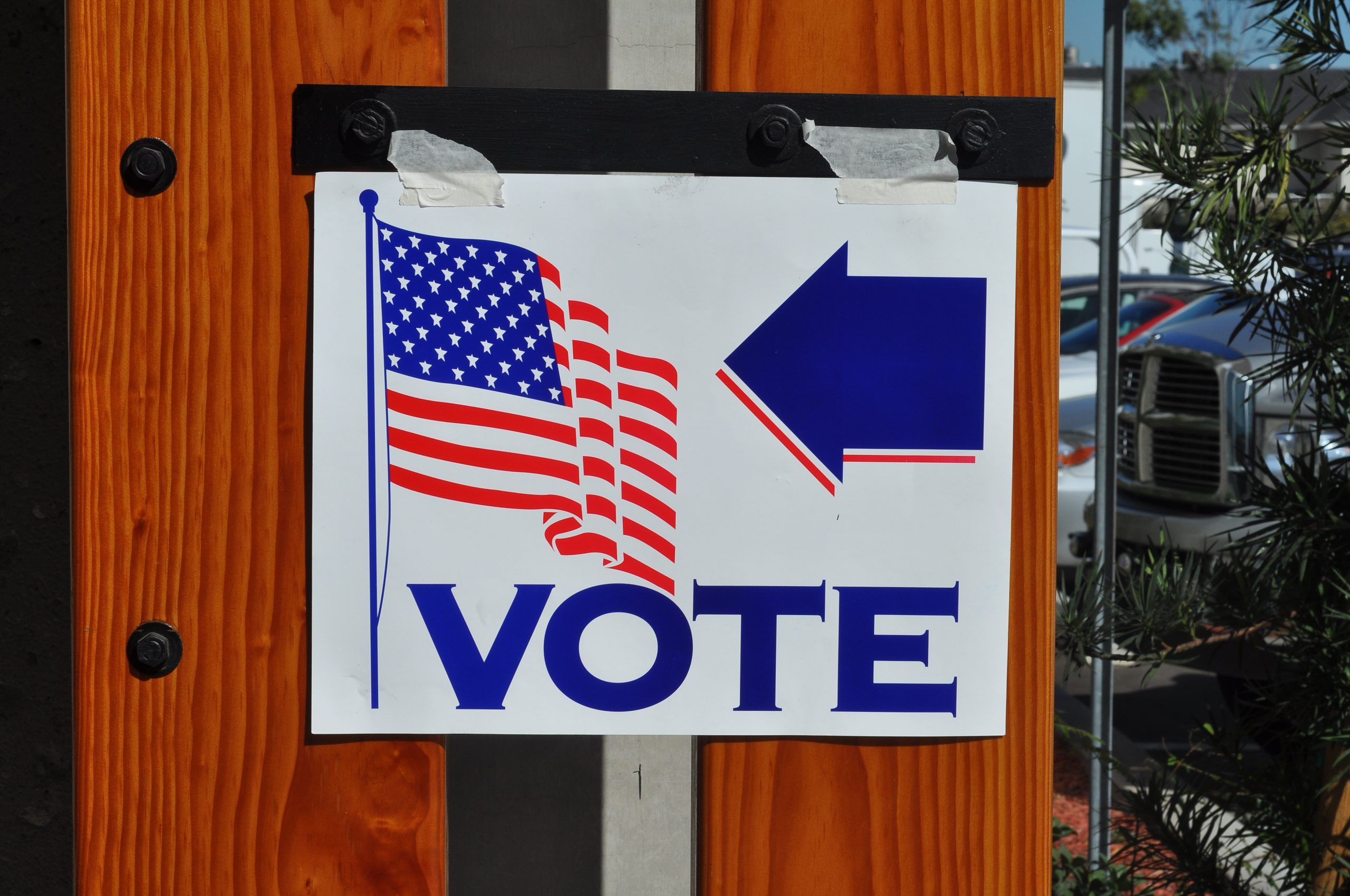
LA County Superior Court Judge James Chalfant. (Photo: Youtube)
Superior Court Judge Strikes Down Los Angeles Outdoor Dining Ban
Judge says LA County’s order is an abuse of the emergency powers
By Evan Symon, December 9, 2020 6:38 pm
On Tuesday, Los Angeles County Superior Court Judge James C. Chalfant ruled that Los Angeles County had acted “arbitrarily” in banning all outdoor dining in November and effectively blocked the County’s ban.
In late November, the LA County Board of Supervisors, with the support of LA County Public Health Director Barbara Ferrer, closed all outdoor dining options, effectively making every restaurant in the County a takeout/delivery operation. While both the County and the city have taken some corrective measures since then, including a restaurant worker stipend program and a $5.6 million restaurant grant program to keep businesses afloat, the efforts have been by and large not enough with restaurants still closing at a high rate within the county.

While Judge Chalfant noted that outdoor dining still cannot reopen due to the statewide lockdown, specifically the Southern California region being under a stay-at-home order until December 21st, the ruling does pave the way for restaurants to be largely unimpeded when reopening outdoor dining later on.
“The Restaurant Closure Order is an abuse of the Department’s emergency powers, is not grounded in science, evidence, or logic, and should be adjudicated to be unenforceable as a matter of law,” said Judge Chalfant in his Tuesday ruling. “By failing to weigh the benefits of an outdoor dining restriction against its costs, the County acted arbitrarily and its decision lacks a rational relationship to a legitimate end.
“L.A. County could be expected to consider the economic cost of closing 30,000 restaurants, the impact to restaurant owners and their employees, and the psychological and emotional cost to a public tired of the pandemic.”
The judge also noted that the county’s concern over transmission of COVID-19 was inconsistent and inconsequential as only 3.1% of all non-residential outbreak locations had come from eating establishments, with most of those cases occurring between employees and not to customers.
LA County officials opposed the ruling on Tuesday, with many saying that it would be impossible to do an economic analysis that the judge specified and that mask orders had been keeping transmission numbers low.
“The data on transmission among mask-less people at restaurants has been crystal clear at every single level that you look at it,” explained Director Ferrer earlier this week. “I don’t think there’s any debate that, where people are in close proximity with other people not in their household, not wearing a mask and mingling for extended periods of time talking, singing, sharing — there’s an increased risk of transmission.”
Amnon Siegel, a lawyer representing the county, noted that the judge’s economic evaluation request was a “borderline impossible task” and had no legal bearing.
However, other health officials have noted that the ban has little to do with dining and is more of a ban against large gatherings.
“The decision to include among other sectors outdoor dining and limiting that — turning to restaurants to deliver and provide takeout options instead — really has to do with the goal of trying to keep people at home, not a comment on the relative safety of outdoor dining,” explained Health and Human Services Agency Secretary Mark Ghaly on Tuesday.
We have worked hard with that industry to create safer ways for outdoor dining to happen — to keeping tables further apart, to ensuring masking happens as much as possible, to create opportunities for air circulation to continue — all of those factors make sectors like outdoor dining lower risk.”
A fight against more restaurant closures
The plaintiffs, led by the California Restaurant Association, celebrated the ruling on Tuesday, noting that the county had decimated the restaurant industry even more after the ban and that they have done little to spread COVID-19.
“For nine months now, we’ve listened to our public health officials tell us that these shutdown orders are based on or they are guided by evidence and science, and we have an L.A. health department who has essentially targeted the restaurant industry as if we are responsible for the latest outbreak in the pandemic when the evidence proves otherwise,” said California Restaurant Association CEO Jot Condie on Wednesday.
“Countless times in recent weeks, we’ve heard public health experts say that the key sources of spread of coronavirus currently are holiday gatherings and other private, household events, which are unregulated. Without evidence, it is unconscionable that the county can close businesses entirely and put thousands of restaurant employees out of work during the holidays.”
Others noted that the ruling could lead to a bigger than planned reopening after the holidays.
“The judge’s ruling has paved the way for restaurants to reopen in LA County after the state order ends,” explained legal analyst Courtney Petersen to the Globe. “LA County has been using certain figures to back up their reasonings, but those are out the window now. They’re going to have to have more precise figures if they’re going to try it again.
“We still need to manage the coronavirus, but we have to do so in reasonable and logically sound ways. The judge on Tuesday basically told LA County that their reasoning just didn’t work.”
The new ruling is effective immediately and will, as of Wednesday, allow outdoor dining to continue in the County on December 21st should no other bans be put into place at the county or city level.
- Bill to Introduce Higher Level Math Courses To 8th Graders Introduced In Senate - April 15, 2024
- Sen. Steven Bradford Announces 2026 Run For Lieutenant Governor - April 15, 2024
- SF Bay Area Sees Three More Companies Issue Mass Layoffs - April 13, 2024





Great news! A judge that makes sense and trying to help our SBO. It is a shame we even had to go there.
Wonderful news.
Ferrer is a fraud, just like Fauci…
Thanks be to God. How about opening up churches, salons, and other places that have not been proven to be high risk for COVID 19 spread?